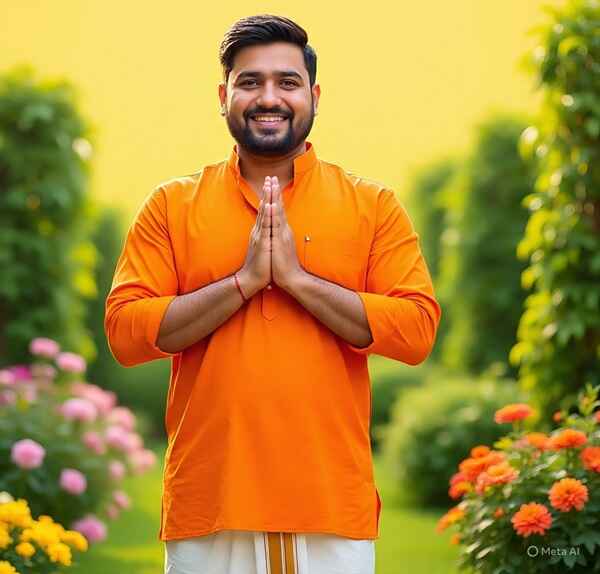Chhattisgarh is considered as the “Rice Bowl of India.” It has a lot of natural resources, tribal traditions, and unique clothing style. The traditional attire of Chhattisgarh showcases the state’s simplicity, charm, and creativity. Every community in Chhattisgarh puts its own design on traditional clothes, making a colorful cultural mosaic. People of both genders wear dresses that are comfortable, environmentally friendly, and suitable for the region’s hot and humid weather.
Traditional Dress of Men in Chhattisgarh:
1. Dhoti
The dhoti is the most frequent traditional outfit for males in Chhattisgarh. It is usually made of cotton, which is perfect for the state’s tropical heat. Men wear the dhoti around their waist and legs, and they usually wear a basic cotton kurta with it. For everyday use, it is easy, straightforward, and simple, but for festivals and events, men wear colourful and decorative silk dhotis with a designer border on it.
2. Kurta

The dhoti looks better and feels better when worn with a cotton kurti. The kurta comes in different lengths; some people like knee-length ones, while others like longer ones. People like to wear white and light colors every day, but they choose brighter colors for any special events.
4. A Turban or Headgear (Pagri)
In Chhattisgarh, men wear a turban which is called a pagri as a part of their traditional dress.It is a symbol of pride and respect,usually worn during weddings, festivals , and cultural events. Pagris are often bright in colour. They are avilable in red, yellow, or orange, and people tie them in differents tyles in different regions.
5. Angvastra
The angvastra is a piece of cloth that hangs over the shoulders and is frequently worn at religious ceremonies, formal events, or festivals. It makes the whole outfit look more traditional, elegant, and it is sometimes woven with beautiful patterns or borders.
6. Men’s Jewelry
Men in he tribal areas of Chhattisgarh also wear jewelry such as earrings, bangles, and silver chains. These ornaments are an important part of their culture and show their strong connection to tradition.
Traditional Dress of Women in Chhattisgarh
1. Lugda (Saree Style)
The lugda is the most common traditional dress for ladies in Chhattisgarh. It is a kind of saree that is usually six meters long and is worn in a unique tribal style. Women wrap the lugda tightly around their bodies in a way that makes it comfortable and lets them move about easily when doing their household work and farming work. Red, green, and yellow are the most popular color combinations, and they commonly have tribal borders on it.
2. A blouse (Polkha or Choli)
Women wear a blouse, which is called a polkha or choli in their local area, with the lugda. The blouse usually has short sleeves and is made to go with or stand out from the lugda. In tribal communities, cotton blouses with simple tribal designs are commonly used. On special occasions, embroidered or adorned cholis are worn.
3. The Kachhora Style Saree
The kachhora style saree is common among tribal women in Chhattisgarh. In this style saree is tucked at the back, make it easier to move while working on farms. It is simple comfortable and a symbol of tribal identity.
4. Jewelry for Women
In Chhattisgarh, jewelry is an important part of every women’s dress.Most ornaments are made of beads, silver or bronze. Common jewelry includes bichhiya (toe rings), baali (earrings), kardhan, chudi. Married women often wear mangalsutra and nose rings as symbols of marriage and tradition.
5. Clothes for Festivals and Weddings
Women wear brightly colored sarees made of silk or special textiles with zari work on any special occasion and at weddings. Brides frequently wear beautifully embroidered sarees with lots of jewelry, which show off the natural beauty of tribal art and traditional crafts.
Conclusion
The traditional dress of Chhattisgarh reflects the simple and colourful life of people. Men wear dhoti, kurta nd pagri with pride. Women wear lugda, kachhora saree and silver jewelry with grace. Each dress and ornament shows the beauty of the tribal culture and their way of life. Though now modern generations prefer modern dress still few follow traditional attire in wedding or cultural events.